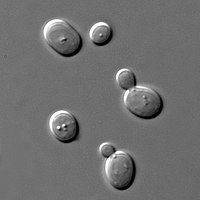
Graphitic carbon nitride–doped sewage sludge as a novel material for photodegradation of Eriochrome Black T
Sign Up to like & getrecommendations! Published in 2020 at "Environmental Science and Pollution Research"
DOI: 10.1007/s11356-020-08551-4
Abstract: The bio-resource utilization of sewage sludge is presented by preparation of novel waste sludge–doped graphite carbon nitride ( g -C 3 N 4 ) photocatalyst. The sludge flocs which constitute bacteria and organic substances served… read more here.
Keywords: sludge; eriochrome black; sewage sludge; carbon nitride ... See more keywords

Enhanced Removal of Eriochrome Black T Using Graphene/NiMgAl-Layered Hydroxides: Isotherm, Kinetic, and Thermodynamic Studies
Sign Up to like & getrecommendations! Published in 2020 at "Arabian Journal for Science and Engineering"
DOI: 10.1007/s13369-019-04327-2
Abstract: In this study, graphene (G) was used as a substrate for NiMgAl ternary-layered hydroxide using coprecipitation technique. The pristine NiMgAl (NMA), graphene-NiMgAl (G/NMA) and their respective calcined products NMA-C and G/NMA-C were investigated as adsorbents… read more here.
Keywords: adsorption; nma nma; surface; graphene nimgal ... See more keywords

Probing the biomolecular targets of azo colorant carcinogens towards purified wetland peroxidase-computational cum in vitro validation
Sign Up to like & getrecommendations! Published in 2019 at "Biocatalysis and Agricultural Biotechnology"
DOI: 10.1016/j.bcab.2019.101127
Abstract: Abstract Azo dyes are attributed to be noxious to aquatic organisms impeding the endocrinal and metabolic phenomenon. Moreover, they are dwelled to exhibit carcinogenesis, teratogenesis and mutagenesis on humans and animals. Hence, this study explicitly… read more here.
Keywords: eriochrome black; peroxidase; probing biomolecular; wetland ... See more keywords

Theoretical and experimental study of the influence of cation–Eriochrome complexes on the BDD anodic oxidation of Eriochrome Black T solutions
Sign Up to like & getrecommendations! Published in 2020 at "Electrochemistry Communications"
DOI: 10.1016/j.elecom.2020.106668
Abstract: Abstract It has previously been established during the elimination of Eriochrome Black T (EBT) that water hardness is an important condition that limits the efficacy of electrochemical treatments of azo dye effluent by the electrophilic… read more here.
Keywords: experimental study; theoretical experimental; anodic oxidation; influence ... See more keywords

Novel electro-polymerized protein-imprinted materials using Eriochrome black T: Application to BSA sensing
Sign Up to like & getrecommendations! Published in 2018 at "Electrochimica Acta"
DOI: 10.1016/j.electacta.2017.12.191
Abstract: Abstract A novel material produced in-situ by electropolymerization of Eriochrome black T (EBT) is presented for the first time to produce a molecularly-imprinted polymer (MIP) tailored for protein recognition. This monomer is particularly useful because… read more here.
Keywords: bsa; spectroscopy; mip; eriochrome black ... See more keywords

Magnetic hydroxyapatite nanocomposite: Impact on eriochrome black-T removal and antibacterial activity
Sign Up to like & getrecommendations! Published in 2019 at "Journal of Molecular Liquids"
DOI: 10.1016/j.molliq.2019.111596
Abstract: Abstract The current investigation reports the removal of Eriochrome Black T (EBT) from aqueous solution by using magnetic hydroxyapatite (M-HAP), a cost-effective adsorbent compared to the other commercial adsorbents. The M-HAP nanocomposite was characterized by… read more here.
Keywords: removal antibacterial; eriochrome black; hap; antibacterial activity ... See more keywords

Brinjal (Solanum melongena) stalk waste as an effective scavenger for Eriochrome Black-T from water and wastewater: an approach towards waste to best
Sign Up to like & getrecommendations! Published in 2022 at "International Journal of Phytoremediation"
DOI: 10.1080/15226514.2022.2123445
Abstract: Abstract Stalks of brinjal (Solanum melongena), hereinafter SM, have been exercised as an efficient and sustainable adsorbent material for the elimination of Eriochrome Black-T (EBT) from an aqueous solution. The material was characterized by FTIR,… read more here.
Keywords: brinjal solanum; waste; solanum melongena; material ... See more keywords

Bioflocculants Produced by Bacterial Strains Isolated from Palm Oil Mill Effluent for Application in the Removal of Eriochrome Black T Dye from Water
Sign Up to like & getrecommendations! Published in 2020 at "Polymers"
DOI: 10.3390/polym12071545
Abstract: Four strains of bioflocculant-producing bacteria were isolated from a palm oil mill effluent (POME). The four bacterial strains were identified as Pseudomonas alcaliphila (B1), Pseudomonas oleovorans (B2), Pseudomonas chengduensis (B3), and Bacillus nitratireducens (B4) by… read more here.
Keywords: oil mill; palm oil; mill effluent; isolated palm ... See more keywords

Photocatalytic degradation of Eriochrome Black-T by the Ni:TiO2 nanocomposites
Sign Up to like & getrecommendations! Published in 2017 at "Desalination and Water Treatment"
DOI: 10.5004/dwt.2017.20541
Abstract: Conventional chemical, biological and adsorption treatments have been applied for the removal of dyes from textile wastewater, but these processes are insufficient in removing dye contaminants. Photocatalysis is greener approach for the degradation of harmful… read more here.
Keywords: tio2; tio2 tio2; degradation eriochrome; eriochrome black ... See more keywords